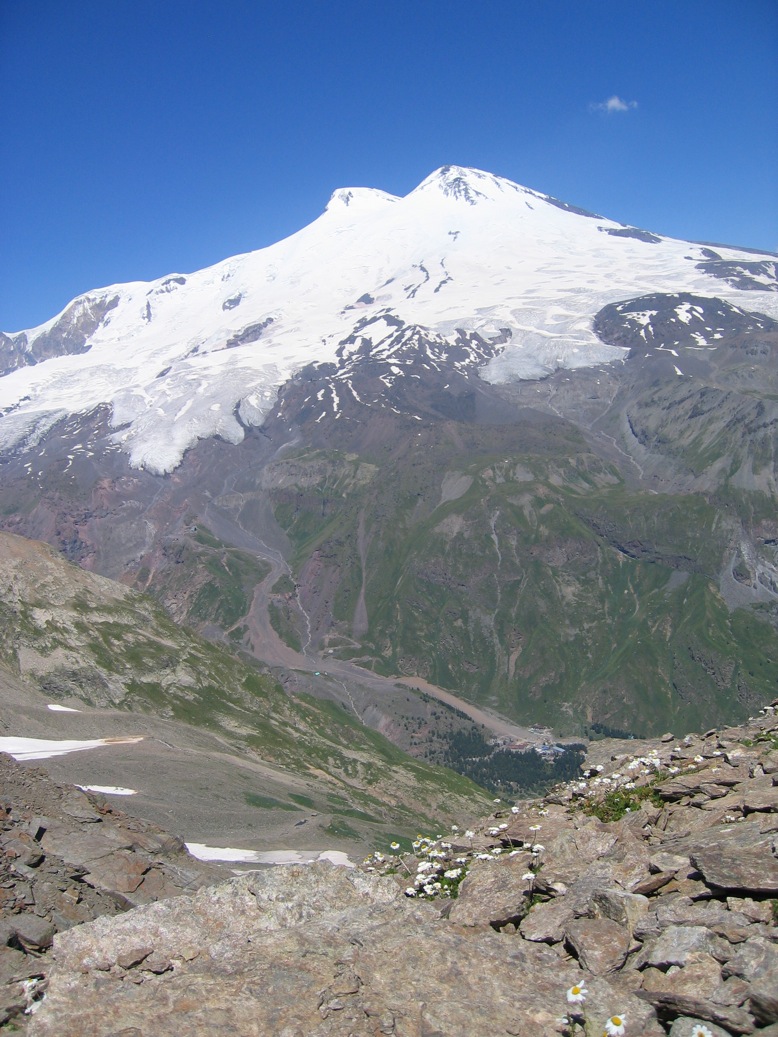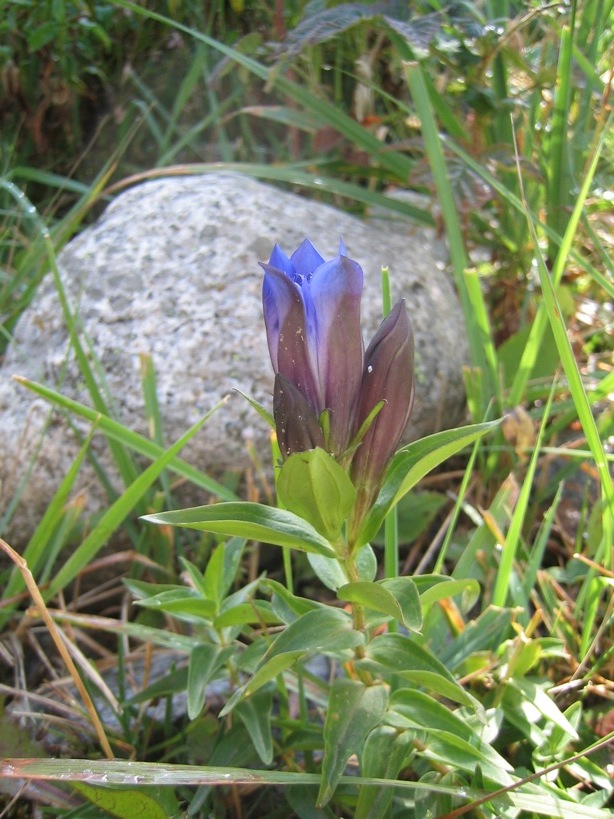Forums:
A couple of years ago I visited Caucasus and the highest mountain in Europe - Elbrus (5642m/18510ft). There is a rich flora in this area but I am sorry to say I didn't picture many plants at that time. I had no time to walk on my knees!
If I ever get the chance I will revisit this place and pay more attention to plants.









Comments
Lori S. (not verified)
Re: Elbrus-The highest mountain in Europe
Wed, 08/18/2010 - 9:22pmWow, what a fabulous trip that must have been, Trond!
My impression is that it looks like a very wild area, as compared to the more usual eastern hemisphere destinations that we are delighted to be shown now and then, here and at other alpine gardening sites. Certainly no highways, restaurants, or townsites in view in these photos, at any rate.
In what month(s) were you there? Did you summit Mt. Elbrus? (A person in the hiking/skiing club to which Stuart belongs, "climbed" it a couple of years ago - interestingly, it was described as hiking, perhaps scrambling, rather than as technical climbing, despite the absolutely incredible height! Does that fit with your observations or experience?)
Even though it sounds as though the point of your trip was not plants at the time, you captured some very interesting ones in our photos. I wonder if the Asteraceae is a Ligularia/Senecio, from the fleshy-looking leaves?
Indeed, it would be wonderful to visit the Caucasus, especially with some time to concentrate on the plants... though I know I would find the variety of plants absolutely baffling! Graham Nicholls, in Dwarf Campanulas, describes the Caucasus as "the Campanula epicenter of the world" - about 5000 plants species(!), 7 genera of Campanulaceae, and 88 Campanula species! The range of environments and species described and shown in The Caucasus and It's Flowers (Holubec and Krivka) also makes one yearn to visit!
Thanks for posting these, Trond.
Trond Hoy
Re: Elbrus-The highest mountain in Europe
Thu, 08/19/2010 - 10:40amA fabulous trip it was! We went ultimo July and visited Moscow first, then planed to a city named Mineralniyje Vody (=Mineral Water) and from there by car to a small village called Cheget/Tsjeget. (This is also a skiing area in winter.) Here we stayed in a hotell for some days doing acclimatisation walks in the area. Later we moved to The Barrels (see picture) for some days before ascending the summit, starting at night to walk on firm snow. We were back early afternoon when the snow had turned moist and we sank deep. We needed crampons and ice axe do to the hard snow and steep rise of the glacier we ascended but it was no difficult, technical climbing just hard walking.
The mountain looked very wild and some of them are only accessable by trained climbers but the road to Cheget was good. There were also small villages in the bottom of the valleys but we couldn't walk everywhere because this area is very close to the Republic of Georgia.
I noticed the many Campanulas in the area. They grew everywhere and were very, very blue!
In the valleys rampant greenery met us along the swollen rivers and also the newly formed moraines had many interesting plants. I deeply regret that I didn't take more pictures but I had difficulties recharging the camera batteries. (Some of the following pictures are not taken by me.)
You are welcome!
Todd Boland
Re: Elbrus-The highest mountain in Europe
Thu, 08/19/2010 - 11:13amYou are more adventurous than me...I'll live vicariously through your photos. Seems you have traveled to many spectacular mountains Trond. The Caucasus is high on my list of places to visit. They have recently begun to offer birding trips to Georgia...I may partake on one of those and botanize on the side. That region ranks up with Yunnan as the place to visit if into alpine plants.
Lori S. (not verified)
Re: Elbrus-The highest mountain in Europe
Tue, 08/24/2010 - 10:34amYes, that's way beyond anything I am ever likely to do, too!
So "The Barrels" was the accommodation you used while getting acclimatized to the elevation? They do indeed look like oil storage tanks, turned sideways - not much effort there at creating an unobtrusive or naturalistic sort of development, but I imagine it serves the purpose.
You have posted some really incredibly atmospheric photos! Looks like a fantastic experience, all round!
Trond Hoy
Re: Elbrus-The highest mountain in Europe
Tue, 08/24/2010 - 11:32amWell, Todd and Lori, adventurous you say, I prefere the green spots but my friend always want to get to the summit!
We do not do technical climbing, only walking, and I try to get glimpses of the flora on the way.
It is always birds to look at, however, I prefere plants to birds too!
These Barrels are pre-made and used many places in Russia we learnt and are flown in by huge helicopters. They contain bunks and a small store room.
Todd Boland
Re: Elbrus-The highest mountain in Europe
Tue, 12/14/2010 - 4:37pmI'd be torn between the birds and plants...I like both equally!